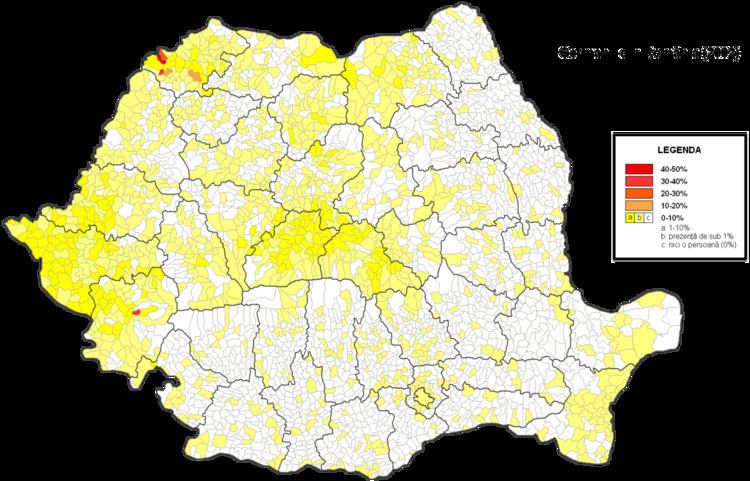 | ||
The Germans of Romania or Rumäniendeutsche are an ethnic group of Romania. During the interwar period in Romania, the total number of ethnic Germans amounted to as much as 786,000 (according to some sources and estimates dating to 1939), a figure which had subsequently fallen to circa 37,000 as of 2011 in contemporary Romania. They are not a single group; thus, in order to understand their language, culture, and history, one must regard them as the following independent groups:
Contents
- German minority population by settlement
- German minority population by county
- Education
- Media
- Notable German Romanians
- References
See Democratic Forum of Germans in Romania for their official representation.
Members of the German family of Hohenzollern who ruled over Romania for a period:
German minority population by settlement
The data displayed in the table below highlights notable settlements (of at least 1%) of the German minority in Romania according to the 2011 Romanian census. Note that some particular figures might be estimative.
German minority population by county
Below is represented the notable German minority population (of at least 1%) for some counties, according to the 2011 census.
Education
In Bucharest there are two German schools, namely Deutsche Schule Bukarest and Deutsches Goethe-Kolleg Bukarest. The Deutsche Schule Bukarest serves Kinderkrippe, Kindergarten, Grundschule, and Gymnasium (high school).
In Timișoara, the Nikolaus Lenau High School was founded during the late 19th century. It was named this way in reference to Nikolaus Lenau, a Banat Swabian Romantic poet. Nowadays, the Nikolaus Lenau High School is considered the most important of its kind from Banat.
In Sibiu, the Samuel von Brukenthal National College is the oldest German-language school from Romania (recorded as early as the 14th century), being also classified as a historical monument. It was subsequently renamed this way in reference to baron Samuel von Brukenthal, a Transylvanian Saxon aristocrat.
Additionally, there are two Goethe Institut cultural associations in Romania: one based in Bucharest and another one in Iași.
Media
Allgemeine Deutsche Zeitung für Rumänien (ADZ) is the daily German-language newspaper in Romania. It is currently the only German-language newspaper from Eastern Europe. Regional German-language publications also include Banater Zeitung (for Banat) and Hermannstädter Zeitung (for Sibiu).
Notable German-Romanians
Below are represented several lists comprising selected notable German-Romanians by historical region.
